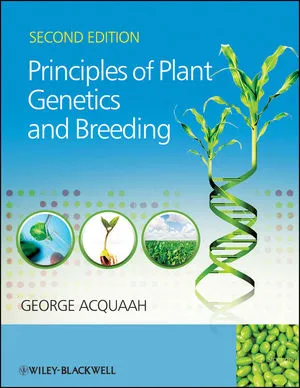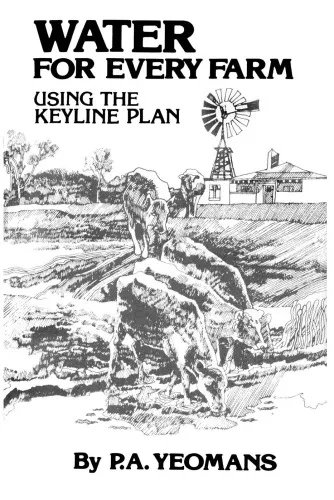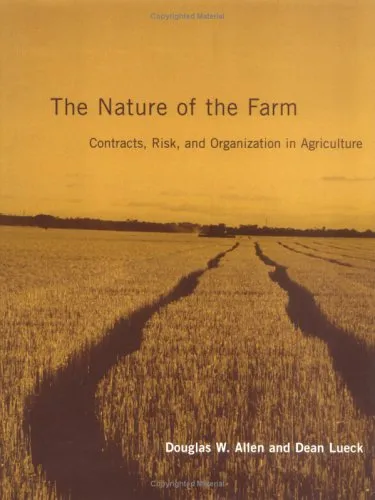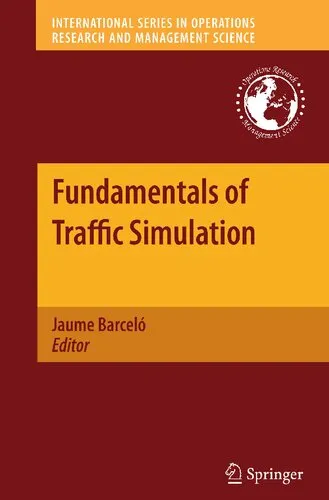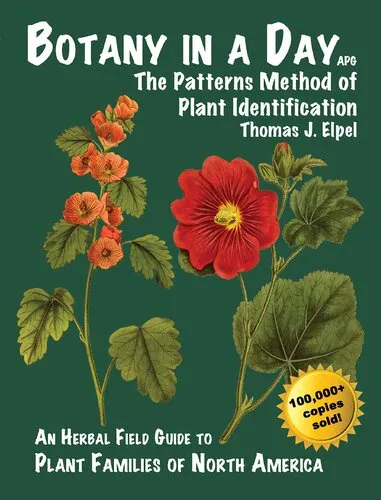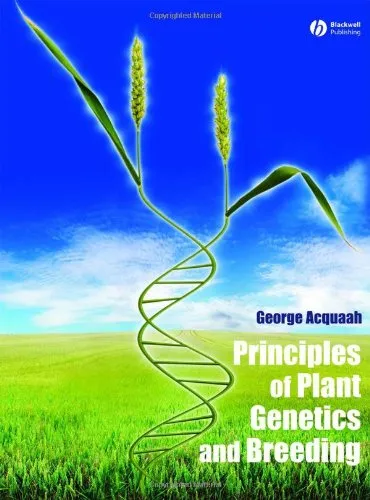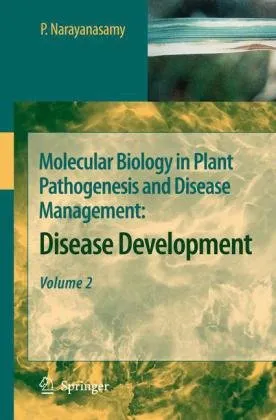Principles of Plant Genetics and Breeding, Second Edition
4.3
بر اساس نظر کاربران

شما میتونید سوالاتتون در باره کتاب رو از هوش مصنوعیش بعد از ورود بپرسید
هر دانلود یا پرسش از هوش مصنوعی 2 امتیاز لازم دارد، برای بدست آوردن امتیاز رایگان، به صفحه ی راهنمای امتیازات سر بزنید و یک سری کار ارزشمند انجام بدینکتاب های مرتبط:
معرفی کتاب Principles of Plant Genetics and Breeding, Second Edition
کتاب Principles of Plant Genetics and Breeding, Second Edition اثر George Acquaah یکی از منابع معتبر علمی در زمینه مهندسی ژنتیک و اصلاح نباتات به شمار میرود. این کتاب با ارائه ترکیبی جامع از اصول نظری و کاربردی، به دانشجویان، محققان و متخصصان در حوزه زیستشناسی گیاهی و کشاورزی این امکان را میدهد تا درک عمیقی از فرآیندهای ژنتیکی و روشهای اصلاح نباتات به دست آورند.
خلاصه کتاب
کتاب به صورت جامع به اصول اساسی ژنتیک گیاهی و اصلاح نباتات پرداخته و موضوعاتی نظیر ساختار ژنتیکی، انتقال ژنها، اصول selection، crossbreeding، و کاربرد فناوریهای نوین برای بهبود گیاهان را پوشش میدهد. بخشهای مختلف کتاب شامل مفاهیمی چون تعریف ژنتیک گیاهی، آشنایی با تکنیکهای آزمایشگاهی، و روشهای ارزیابی نتایج اصلاح نباتات هستند. همچنین نویسنده به اهمیت حفظ تنوع ژنتیکی و مدیریتی پایدار تاکید میکند که برای تضمین امنیت غذایی ضروری است.
نکات کلیدی
- آشنایی با اصول بنیادی ژنتیک گیاهی.
- توضیح روشهای مختلف اصلاح نباتات مانند hybridization و mutation breeding.
- بررسی نقش biotechnology در اصلاح مدرن گیاهان.
- ارائه مدلهای کاربردی برای حفظ تنوع ژنتیکی.
- نقش اخلاق در استفاده از فناوریهای اصلاح نباتات.
جملات معروف از کتاب
"The success of plant breeding hinges on understanding genetic variability and how it can be manipulated for crop improvement."
"Sustainable agriculture relies on the wise use of genetic resources and the integration of innovative technologies."
چرا این کتاب مهم است؟
کتاب Principles of Plant Genetics and Breeding برای دانشجویان و متخصصان علوم کشاورزی و زیستشناسی ابزاری ارزشمند است، زیرا ترکیبی از اطلاعات پژوهشی، روشهای عملی و جنبههای اخلاقی را ارائه میدهد. در دنیای امروزی، اصلاح نباتات به عنوان یکی از ابزارهای کلیدی برای مقابله با چالشهایی نظیر تغییرات اقلیمی، کاهش منابع طبیعی و نیاز رو به رشد به امنیت غذایی شناخته میشود. این کتاب نه تنها فرصتهای بالقوه ناشی از فناوریهای نوین مثل genetic engineering و marker-assisted selection را بررسی میکند، بلکه به مسائل چالشبرانگیز اخلاقی و حقوقی مرتبط نیز میپردازد.
برای خوانندگان عمومی، این کتاب میتواند به افزایش آگاهی درباره اهمیت اصلاحات ژنتیکی در کشاورزی پایدار کمک کند. برای محققان و متخصصان نیز، ابزاری کاربردی جهت توسعه دانش و مهارتهای حرفهای در این حوزه فراهم میآورد.
دانلود رایگان مستقیم
شما میتونید سوالاتتون در باره کتاب رو از هوش مصنوعیش بعد از ورود بپرسید
دسترسی به کتابها از طریق پلتفرمهای قانونی و کتابخانههای عمومی نه تنها از حقوق نویسندگان و ناشران حمایت میکند، بلکه به پایداری فرهنگ کتابخوانی نیز کمک میرساند. پیش از دانلود، لحظهای به بررسی این گزینهها فکر کنید.
این کتاب رو در پلتفرم های دیگه ببینید
WorldCat به شما کمک میکنه تا کتاب ها رو در کتابخانه های سراسر دنیا پیدا کنید
امتیازها، نظرات تخصصی و صحبت ها درباره کتاب را در Goodreads ببینید
کتابهای کمیاب یا دست دوم را در AbeBooks پیدا کنید و بخرید
1364
بازدید4.3
امتیاز0
نظر98%
رضایتنظرات:
4.3
بر اساس 0 نظر کاربران
Questions & Answers
Ask questions about this book or help others by answering
No questions yet. Be the first to ask!
